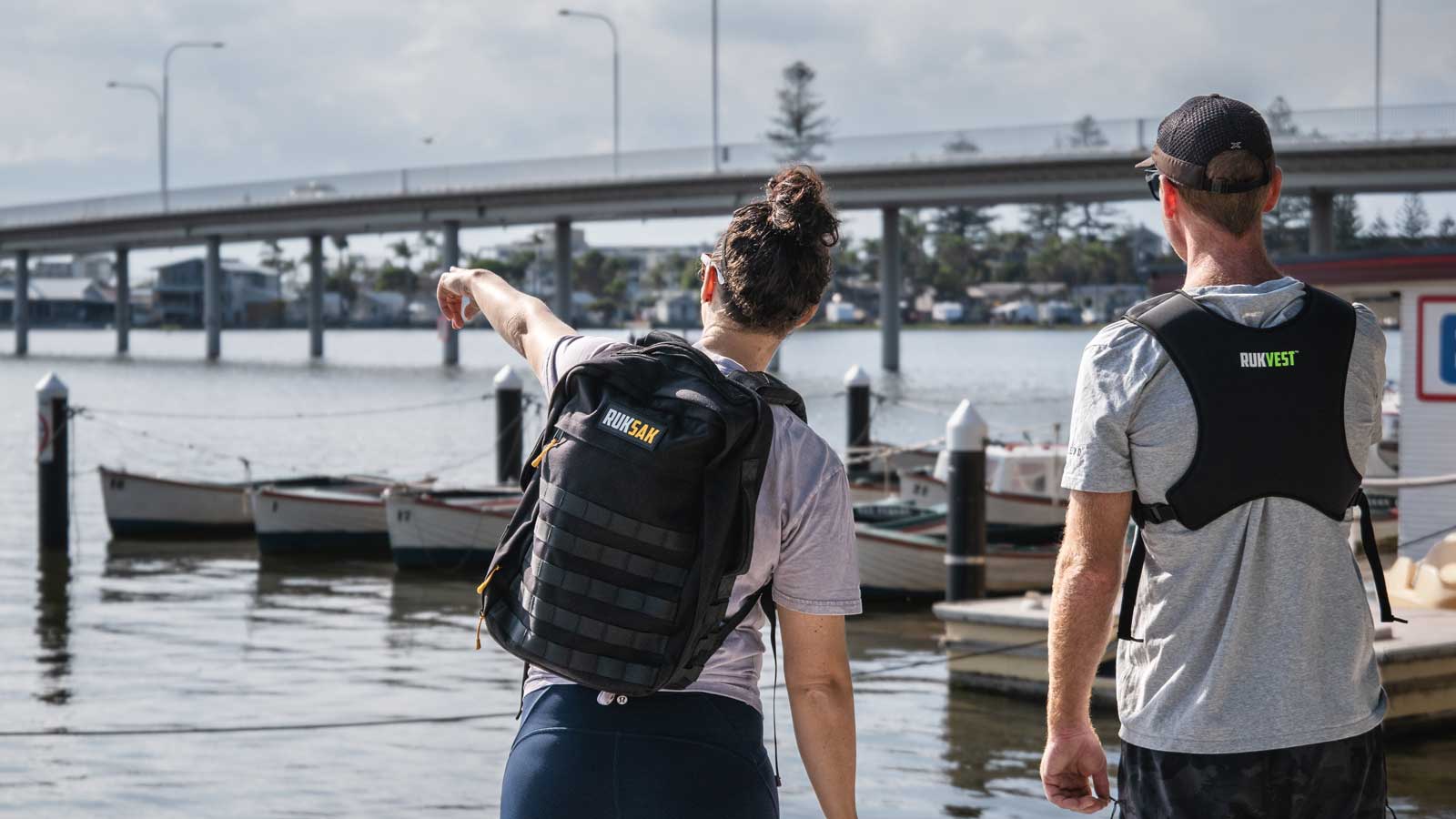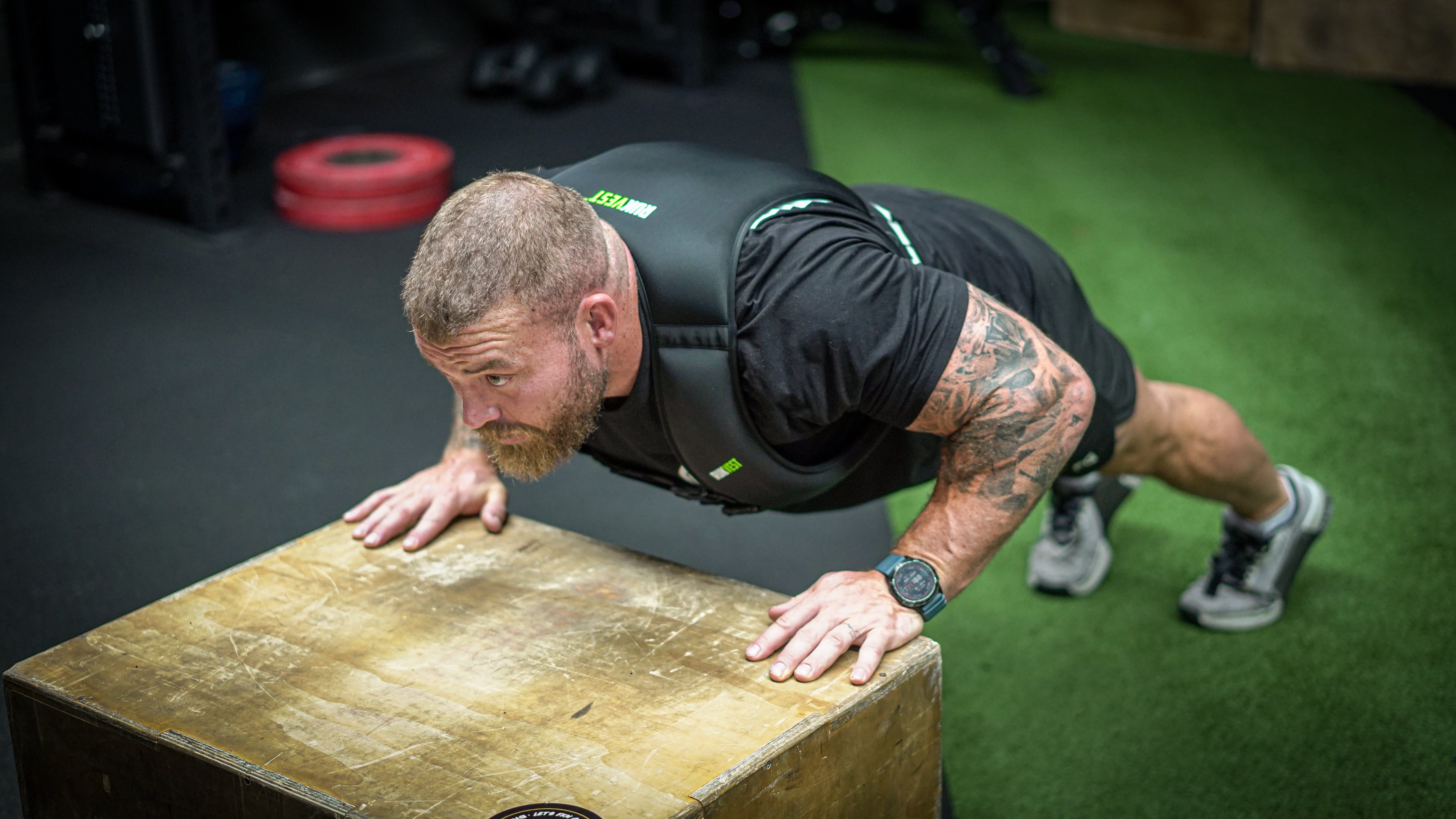You want to add weight to your routine for bone health, fitness, or functional strength. You know both weighted backpacks and weighted vests work. But which one is actually right for you?
The honest answer: They're both good. They just do different things. And understanding those differences will help you pick the tool that actually fits your life.
Key Takeaways
- Both weighted vests and backpacks improve fitness and bone strength – they just serve different goals.
- Weighted vests distribute weight evenly across your torso, promoting upright posture and targeting the spine and hips for bone loading.
- Weighted backpacks place weight on your back and shoulders, improving full-body strength, stability, and endurance.
- Vests are ideal for bone density, active recovery, and convenience – you can wear them during daily tasks.
- Weighted Backpacks are better for functional strength and long walks, they engage more muscles and burn more calories per session.
- Comfort and consistency matter most: choose the option that fits your lifestyle and you’ll get better long-term results.
- Many people use both: vests for short, frequent sessions; backpacks for longer, strength-focused training.
The Fundamental Difference: Where the Weight Goes
Here's the core distinction.
- A weighted vest distributes weight evenly across your torso - front, back, and sides. The weight wraps around you.
- A weighted backpack concentrates weight on your back and shoulders. The weight is carried behind you.
This one difference changes everything about how your body responds, what you can do, and whether you'll actually stick with it.
How Each Affects Your Bones
Both methods create mechanical loading - the force that tells your bones to get stronger. But they load your skeleton differently.
Weighted Vest Bone Loading:
- Even weight distribution across your torso targets your spine and hips specifically
- With exercise ( especially when combined with light impact), a weighted vest creates compressive forces that can help bone density.
- Research shows weighted vests can maintain or improve bone mineral density, particularly in the spine and hip when combined with impactful movement
- Best for: Bone density preservation during perimenopause and post menopause, when you want targeted spinal support
Weighted Backpack Bone Loading:
- Weight on your back engages your entire body's stabiliser muscles
- Creates compressive forces on the vertebrae and proximal femur through postural adjustment
- Research from Jaroslava Wendlova's studies shows backpacks help rehabilitate osteoporotic patients - recommended load is up to 2 kg (4.5 lbs) for patients without vertebral fractures
- Best for: Functional strength, muscle balance correction, and long-duration activities where you want to engage your whole body

The Posture Story: Why This Matters
Here's where the research gets interesting.
When you wear a weighted vest, your body maintains an upright posture. A 2019 study from Hong Kong found that vest loads result in "more upright walking posture and induced fewer postural deviations from normal walking."
When you carry a weighted backpack, your body naturally leans forward slightly and your head tilts forward. The heavier the pack, the more forward lean.
Which is better? It depends on your goal.
For pure bone density targeting (especially spine and hip): The vest's upright posture is ideal. You're not changing your gait mechanics, so you're just adding load without compensation.
For functional strength and muscle engagement: The backpack's forward lean actually engages more muscles. Your core, back, shoulders, and hips all work harder to stabilise you. This is why soldiers, hikers, and functional fitness enthusiasts prefer backpacks.
The Comfort Factor: Why Most People Quit
Here's the brutal truth: Most people quit whatever they choose within 2-4 weeks if it's uncomfortable.
Weighted Vest Comfort:
- Pro: Easy to put on and take off (usually)
- Pro: Doesn't interfere with your hands or arms
- Con: Can make you hotter because weight wraps around your entire torso
Weighted Backpack Comfort:
- Pro: Great for longer durations - you can wear it for hours comfortably
- Pro: Better temperature regulation - weight doesn't wrap around your torso
- Pro: Allows natural arm and leg movement
- Con: Requires proper fit with hip belt and sternum strap to avoid shoulder strain
- Con: More nuanced to load correctly
- Con: Takes longer to put on and adjust
The Workout Versatility Question
What can you actually do in each?
Weighted Vest:
- Running and high-intensity cardio
- Agility drills and plyometrics
- Bodyweight exercises (pushups, pull ups, etc.)
- Everyday activities while working
- Limitation: Best at lighter loads (around 5-10% of body weight).
Weighted Backpack:
- Walking and hiking
- Loaded carries
- Functional movements like squats and planks (with proper form)
- Everyday activities like shopping or commuting
- Limitation: Primarily designed for walking/hiking. Not ideal for running or high-intensity work
The Load Capacity Difference
This is important for bone health specifically.
Weighted Vest:
- Best for lighter, more frequent loads
- Typically 3-11kg depending on your fitness level
Weighted Backpack:
- Better for heavier loads
- Can handle up to 15KG depending on your fitness level and the pack
- Ideal for loads exceeding 10% of your body weight
- Creates more functional challenge because weight is concentrated

Which Should You Actually Choose?
If you're looking to lose weight:
Choose a weighted vest if: You want to increase calorie burn during everyday activities. A weighted vest increases energy expenditure by 5-15% depending on load and intensity. Wearing it while doing household tasks, working, or light walking burns more calories without requiring dedicated exercise time. The added resistance makes your body work harder, which contributes to weight loss when combined with a calorie deficit.
Choose a weighted backpack if: You want to commit to dedicated walking or hiking sessions. A weighted backpack forces your entire body to work harder - your core, legs, and back all engage more intensely. This creates greater calorie burn per session. If you can dedicate 3-5 sessions per week to weighted walks, a backpack delivers better weight loss results than a vest.
If you're an active person looking for active recovery:
Choose a weighted vest if: You want a low-impact recovery tool that doesn't interfere with your training. Wear it during light movement days - easy walks, mobility work, or gentle stretching. The added load stimulates your nervous system without creating the muscle soreness of intense training. It's ideal for active recovery days when you want to stay moving but not stress your muscles further.
Choose a weighted backpack if: You want functional recovery that builds resilience. Loaded carries (the foundation of weighted backpack training) are excellent for active recovery because they engage stabiliser muscles without the impact of running or jumping. A 30-45 minute weighted walk builds grip strength, core stability, and posterior chain resilience while your muscles recover from intense sessions.
If you're a woman in perimenopause or early postmenopause focusing on bone density:
Choose a weighted vest if: You want targeted spinal and hip loading, you prefer shorter sessions (20-45 minutes), you want to wear it while working or doing household tasks, you value ease of use.
Choose a weighted backpack if: You want to engage your whole body, you prefer longer sessions (45+ minutes), you like outdoor activities like walking or hiking, you want functional strength alongside bone building.
If you're managing osteopenia:
Choose a weighted vest if: You want maximum bone density targeting with minimal movement compensation, you're newer to weighted exercise.
Choose a weighted backpack if: You want to build muscle balance and core stability alongside bone density, you can commit to proper loading and fit.
The Honest Take: Many People Use Both
Here's what the research and real-world experience shows: The best approach isn't choosing one. It's using both for different purposes.
Wear your weighted vest on busy workdays when you have 30 minutes. Walk around your house or office in it while handling emails and tasks.
Use your weighted backpack for dedicated walking sessions on weekends. Go for a 45-minute walk in your neighbourhood or a local park. The longer duration and functional movement pattern engage more of your body.
If you have the budget and the commitment, rotating between both actually maximises bone density benefits and prevents adaptation (your bones respond better to varied loading patterns).
Getting Started Safely
Regardless of which you choose:
Start light: Begin with 3-5kg if you've never carried weight before. Your bones and muscles need time to adapt.
Ensure proper fit: For vests, make sure you can breathe deeply. For backpacks, use the hip belt and sternum strap - they distribute weight to your hips, not just your shoulders.
Monitor your body: If you experience joint pain or muscle strain, reduce the weight. Discomfort is a signal to adjust.
Be consistent: Bone loading works through repetition. Wearing your vest or backpack 3-5 times per week is more effective than sporadic heavy use.
Your Next Step
Ask yourself: What does my typical week look like? Do I have time for dedicated walking sessions, or am I juggling work and family tasks?
If it's the latter, start with a weighted vest. You can integrate it into your existing routine.
If you have dedicated time for walks and want to build functional strength alongside bone density, a weighted backpack is your answer.
Better yet? Start with whichever feels more natural to you. The best tool is the one you'll actually use consistently.






Why avoid weighted vests filled with sand or iron pellets?
Loose fillings like iron sand shift and leak over time, creating uneven loading and discomfort. That instability reduces effectiveness for bone health and posture. A well-designed vest (like one with weighted gel) keeps the weight stable, balanced, and close to your body, giving you consistent, safe loading every time.
Which burns more calories: a weighted vest or a weighted backpack?
A weighted backpack typically burns more calories per session because it engages more muscles and allows for heavier loads. But a weighted vest increases calorie burn during everyday tasks — you can wear it while working, cleaning, or walking. If you want to add steady resistance during daily tasks, go for the vest; if you want focused calorie burn during workouts, use the weighted backpack.
Can I use both a weighted vest and a weighted backpack?
Can I use both a weighted vest and a weighted backpack? Yes, in fact, that’s ideal. Many people use a weighted vest for shorter, daily sessions and a weighted backpack for longer, strength-focused walks. Alternating between both creates varied bone and muscle loading patterns, which can improve results over time.
How heavy should my weighted vest or backpack be?
Start light — around 3–5 kg – especially if you’re new to resistance loading. Gradually increase the weight as your body adapts. Consistent use at moderate weight is more effective than occasional heavy sessions.
Share:
Osteopenia vs Osteoporosis: Why Your Weighted Vest Strategy Changes
Why Weighted Vests are the New Must-Have for Trainers and Gyms